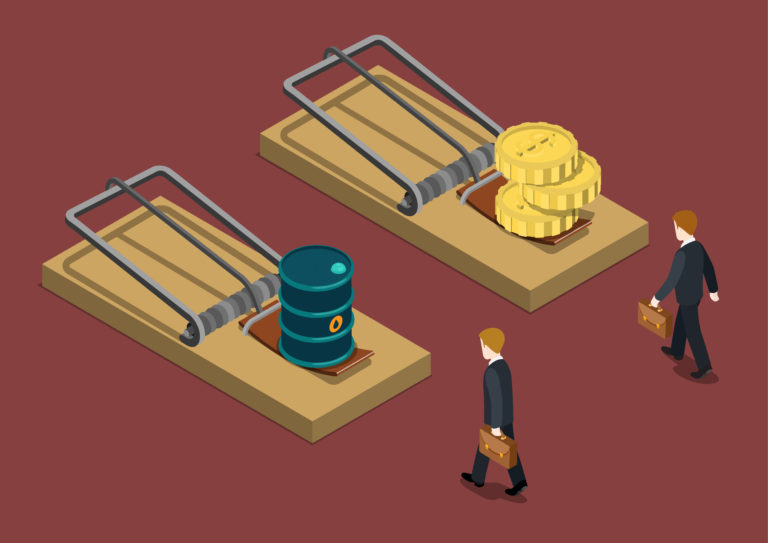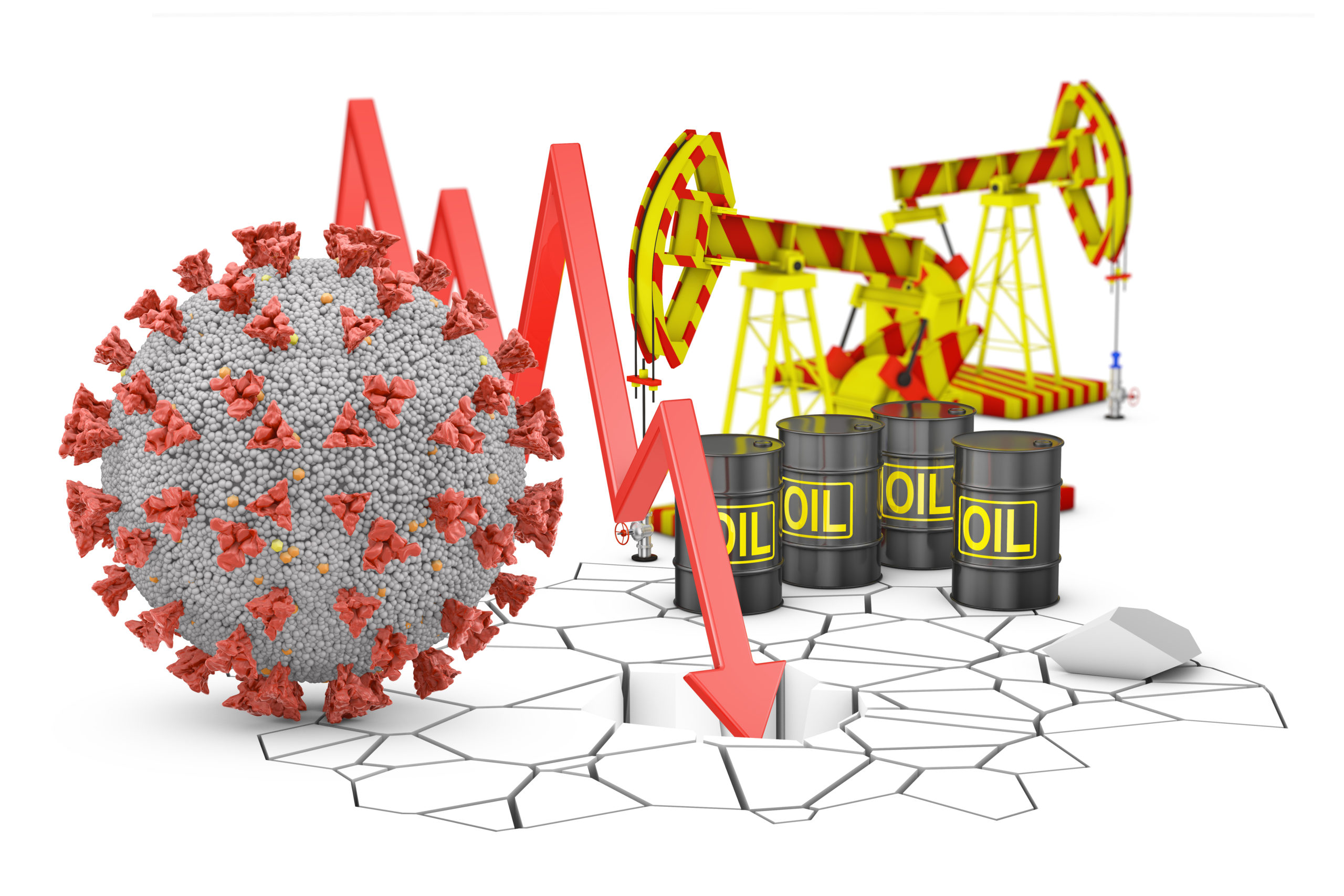The supply increases as demand diminishes and Oil & Gas needs to reorganize business. In the span of the COVID-19 crisis, it is safe to accept and continue to witness a dramatic shift in life and management. The resulting anxiety, both human and economic, has also prevented traditional business models from switching quickly. Although the Novel Coronavirus is cause of turmoil for businesses in general, even before the pandemic with the supply-demand imbalance already came in effect, the oil & gas industry had already experienced serious problems.
The Industry of Petroleum & Gas (O&G), which contributes 5.2% to the global demand for oil, is among the top 3 large markets in demand, and the 4th largest in refining capacity worldwide (~249 MTPA). The industry must dig deep and explore its proud history of audacious structural moves, of innovation and of safe and profitable operations in the harshest conditions to change the current paradigm. The winners will be those who use the crisis to replace their portfolios and transform their operational models courageously. Companies that are not inevitably restructured or atrophied.
The emergence of shales, over-supply, and generous financial markets, which ignored the limited discipline of capital, have all contributed to poor returns. CEOs feel today that change is inevitable with prices that are reaching 30 years’ lower levels and accelerating social pressure. The crisis of COVID-19 speeds up what was already one of the most transformative moments of the industry.
While the depth and duration of this crisis are uncertain, our research shows that the attractive industry performance, which has historically prevailed, is difficult to return with no fundamental changes. The industry is now in an era of intense competition, technological rapid supply responses, flat demand, scepticism of investors and increased public and government pressure for climate and environment. But oil and gas will remain a $1 trillion market for decades in most scenarios. It is too important to fail, given its role in providing affordable energy. Therefore, it is fundamental how value can be created in the next normal.
A troubled industry is coming into crisis
The industry operates through long, shifting supply and demand megacities, alongside shocks. These megacycles saw wide changes in the creation of value.
The industry created exceptional shareholder value after restructuring in the early 1980s. In all segments of the industry, except refining and marketing enterprises, total returns to shareholders (TRS) exceeded the TRS of the S&P 500 index from 1990 to 2005. The demand for oil and gas has increased and OPEC has helped keep prices stable. Because memories of $10 per barrel (bbl.) from the 1980s were acute, companies kept costs low. From megamergers a new class of supermajor emerged; for decades they have created value. Similarly, there have been companies with “big three” oil field service equipment (OFSE). Political openings and new technologies created a chance for everyone.

In fact, the global industry failed to keep pace with the wider market from 2005 to January 2020, while macro tailwinds such as high demand and efficient supply access continued. The average annual TRS growth in the oil and gas industry was approximately seven percentage points below S&P 500 in this period (Exhibit 1). Similarly, every sub-segment was market deficient and independent upstream companies and OFSE delivered zero or negative TRS. The analysis excludes companies not listed in this period (including some structurally advantaged national oil companies, and private companies).
The profit structure of the industry was favorable in the early years of this period. Demand for oil increased by over 1% a year and for liquid natural gas by between 3 and 5% a year (LNG). The “cost curves” of the industry – its assets ranked from lowest to highest – were steep. The price of market clearing has increased with considerable high-cost production required to meet demand. The same applies to gas and LNG, which often have a strong link between oil and prices. Even downstream, high margins were supported by a steep costs curve of the world’s refinement capability.
Today and tomorrow's challenges
The combined pandemic disruption of COVID-19 and the supply glut created an unprecedented industrial crisis. Supported by this highly positive sector structure and supported by easy provision of returns on capital, as interest rates dropped, companies made heavy investments. The drive to fill more barrels with more complex resources has led, particularly in engineering and construction, to dramatic inflation of costs. These investments have generated massive proven reserves which have shifted world supplies from slightly short too long.
The investments in shale oil and gas have been significant, with several deep implications. Shale first re-formed the structure of the upstream industry. The production-cost curve was flattened by the introduction by shale oil and gas (i.e.) and the shale oil reduced marginal supply cost and market price. shale oil was displaced by much higher cost outputs such as oil sands and coal gas (Exhibit 2).
In yet another flap, the shale growth made the maintenance of market share and price discipline more challenging for OPEC. Although OPEC has since 2016 been reducing the output of crude oil and natural gas by 5.2 million barrels (bpd) per day, over this period shales have added 7.7 million bpd to share and limit the prices. It would be difficult to repeat the price gap of 2000 – 14 if the industry doesn’t need a decade to find new resources or develop them but can turn on large supplies in a matter of months.
In the past, price wars have been wiping out poor performers and leading to strengthening. But in 2009–10 and again in 2014–16, capital markets were generous to the petroleum industry. In the belief that prices would continue to rise and the implicit “OPEC put” set a floor for many investors, instead of operating cash flows and equity discipline, focused on volume debt-based growth.
That’s not how it worked.
Short-term supply, demand, and pricing scenarios
Oil prices may recover in pre-crisis levels between $50/bbl to $60/bbl by 2021 or 2022, under most best-case scenarios. Crude price differentials will also present challenges and opportunities over this period. The industry could also benefit from a modest temporary price increase as the massive decline today in investment leads to spot shortages in the future. These price levels could not be achieved until 2024 in two other scenarios we have modelled. Oil prices may not come back to levels of the past in a downside case. In any event, in the next few years, oil is in difficult times.
Regional gas prices could drop far below the preceding megacle. At low cost less than $2.5/MMBtu shale gas has unlocked plenty of gas resources at $3.0. The pandemic immediately affected and reduced gas demand from pre-crisis projections by five to ten per cent. As North America becomes one of the largest LNG exporters in the early 2020s and a highly overprovided LNG market, the regional gas prices for Europe and Asia, plus transport and liquefaction cash costs (around $1/MMBtu to $2/MMBtu) will be driven by prices at Henry Hub.
Refined product demand is down at least 20% and has plunged into crisis refining. We believe the prospect of jet fuel will become particularly bleak, at least two years before demand recovers.
The immediate effects are already shocking: companies must see how to operate safely, as infection spreads and how to handle full storage, prices for some operators drop below cash costs and capital markets close for all but the biggest players.
The crisis as catalyst
In the first place, the pandemic is both a humanitarian and an unprecedented economic challenge. The industry reacted with a heroic effort to operate essential assets successfully and safely at this time of difficulty. In the short and long term, the current crisis has a profound impact on industry. The radical redevelopment of the oil and gas ecosystem and when will depend on the potential outcome of supply demand and the actions of other parties such as government, regulators and investors. However, in every scenario, we argue that the crisis without precedents will become a catalyst and will accelerate permanent changes in the ecosystem of the industry with new opportunities for the future.
The energy transition continues to be a challenge. Governments are now focused on managing and reducing the effects of the COVID-19 pandemic on economies, which diverts attention from the transition to energy. That said, it is unlikely that the climate and environment debate will disappear. The industry will continue to need innovation that has lowered wind, solar and battery costs and decarbonization. The negative public feelings and pressure on investors and lenders that have been endured in the past can prove to be mild in comparison to the future. The current crisis can even accelerate the transition and decarbonization of energy.

Industry Implications
All companies are rightly working to protect the health and security of employees and protect cash, notably by lowering or deferred discretionary capital and operating costs and distribution to shareholders in many cases. These actions won’t be sufficient for players with a financial strain. In many sectors of the industry, we will likely see the opportunity for a deep reset.
Upstream
There is likely to be a wide-range restructuring of several upstream cubicles based on the chance of balancing weaknesses, particularly onshore America and other mature, high-cost cubicles. We could witness an important consolidation of the US onshore industry, which currently has more than 100 large companies, with only big, smaller, truly smooth, and innovative actors surviving. “basin masters,” to lower unit costs by using synergies, could lead to widespread consolidation. We estimate that skill and scale savings combined with new ways of working alone could reduce further costs by up to $10/bbl, reduce the break-even point in the shale and improve resilience.
Downstream
Whenever a secular decline begins in oil demand, the closure of refineries and other assets with high costs or poor proximity to growing non-OECD markets would be necessary. As we saw in the 1980s and 1990s however, governments can intervene to advocate inefficient assets that put additional pressure on advantageous assets in the global refining ecosystem elsewhere. The potential response of the sector is consolidation, another wave of efficiency effort and the hard work required to get every last cent of value out of optimizing refineries and their supply chains. In the medium term, retail networks can increase their value (and access to customers).
Midstream
Creditworthy midstream assets with contracts have proven to be a successful business model. But as demand peaks in the 2030s—there is likely to be a reduction in pressure on piping-on-pipe competition rates—midstream may continue to be a value-creating component of the oil and gas value chain.
Petrochemicals
Products for leading players, petrochemicals were and can still be a strong part of the portfolio. A disciplined investment in assets that have distinctive technology and privileged markets (such as integrated refinement/ petrochemical installations on a scale) should allow for value creation.
LNG and global gas
Gas is fossil fuel with fast-growing growth, with robust energy transition demand (for example, the shifts away from coal, and from dispatchable backup to renewables). The total emission volume of greenhouse gases for some LNG value chains is however still calculated. We estimate that global gas demand will peak in the late 2030s, since heating electricity and renewable energy development can erode long-term demand. Combined with medium-term volatility, this could lead to additional consolidation and incremental economic activity in the industry.
Field of oil
OFS and supply chain services and equipment. The crisis came in a lot of the oil and gas supply industry; substantial overcapacity was developed and after 2014 profitability collapsed. The industry has experienced the radical consolidation, reduced capacity and capacity improvements needed, despite a wave of bankruptcies and restructurings. This restructuring is likely to take place now, given that asset liquidation similar more to the oil bust in the 1980s than to soft financial restructuring in 2015–20, and a new wave of corporate reconfiguration, technological acceleration, and customer partnerships.
National oil companies
Due to their role as contributors to national budgets and societal needs of governments, national oil companies (NOCs) will be subjected to additional pressure. The complex choices between discipline in the supply sector and protection from market share will be strengthened. The pressure for fundamental changes (e.g., through privatization or a new way of working with IOCs and OFSE firms) is intense in the case of NOCs without the lowest cost resources.
Durable Challenges
Toward the end of 1930 the macro environment is set to be even more demanding if we look beyond today’s crisis. Begin with demand and supply. In the 2030s, we expect hydrocarbon demand, especially oil, to peak and then slowly drop.
Excess refining capacities are exposed and the economics of certain refiners, which try to avoid the large cost of closing assets, are under pressure for profits driven by lower pricing and – in some cases outside the growing demand markets of the Non-OECD.
The cost curve upstream probably remains flat. Although geopolitical risks continue to play a major part in supply, new low-cost sources of short-cycle supply are reducing price increases in amplitude and duration. Nevertheless, the battered shale oil and gas sub-sector will still deliver rapid delivery. It could even improve its resilience, as larger, stronger players strengthen the industry. The task of OPEC and OPEC++ will be harder to do than easier with decreasing demand driven by the energy transition and global oversupply.
In the energy transition, the world’s gas and LNG will play a positive role, guaranteeing a place in the future energy mix, supported by constant demand growth in the decade ahead. However, LNG will add pressure and volatility to global LNG contract pricing and, consequently, regional gas prices by the expected and potential cyclical capacity expansion over the decade. Gas will face the same pressures as oil in the longer term (post-2035), with higher demand and incremental decisions on economy.
There are increasing numbers of investors wondering if oil and gas companies today will ever produce acceptable returns. Your role is also uncertain in the energy transition. It will be necessary for oil and gas companies to prove that they can control this area. Discipline will be critical in the areas of financing, capital allocation, risk and governance.
The Final Words
In particular during crises, new companies relating to energy transition and renewables will also continue to emerge. There are still unclear returns for some of these occurrences, and oil and gas must demonstrate whether it can be a natural and leading player in these companies. All of which may be interesting areas of the petroleum and gas industry could be hydrogen, ammonia, methanol, new plastic and carbon capture, utilization, and storage (CCUS).




Leave a Reply